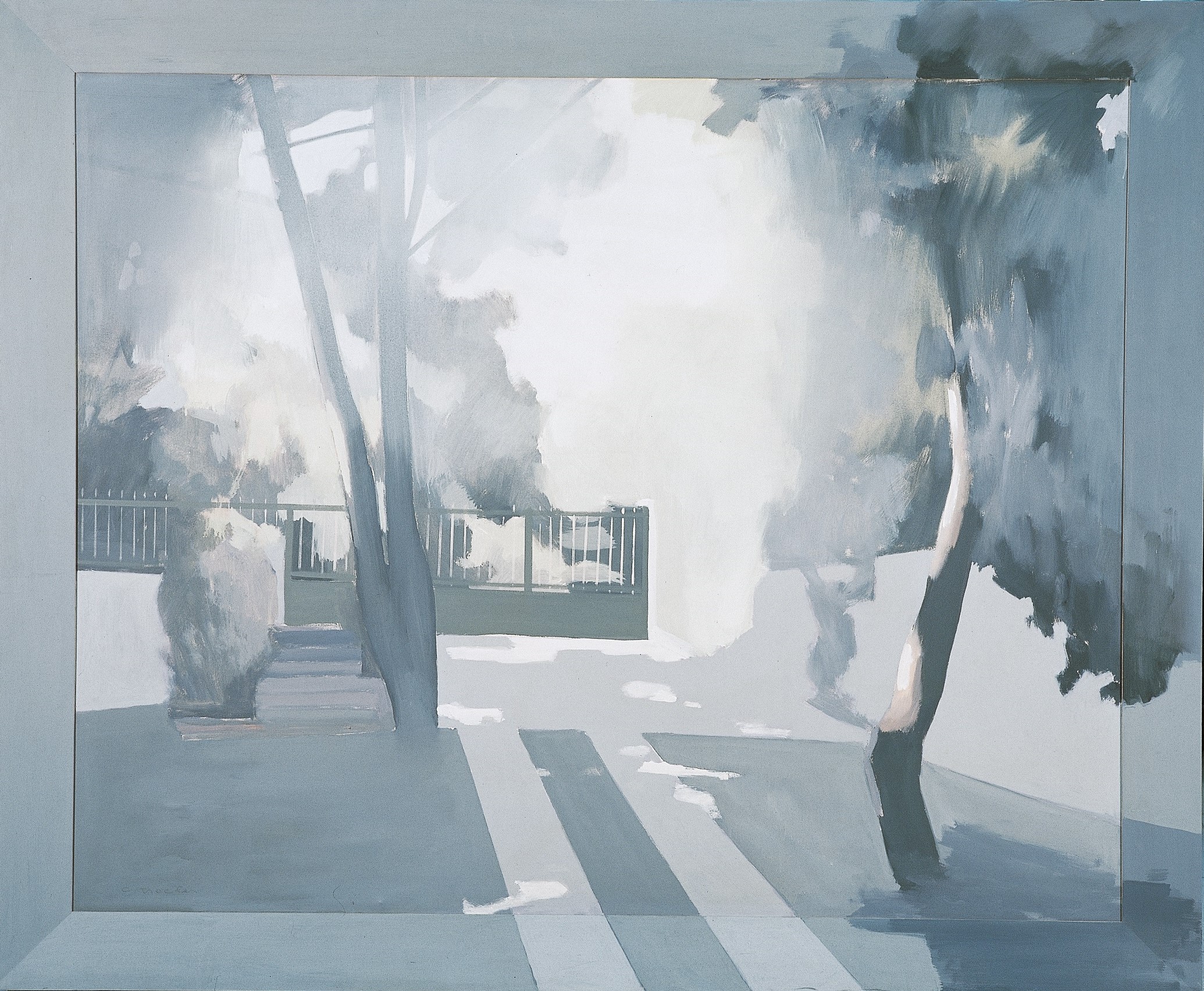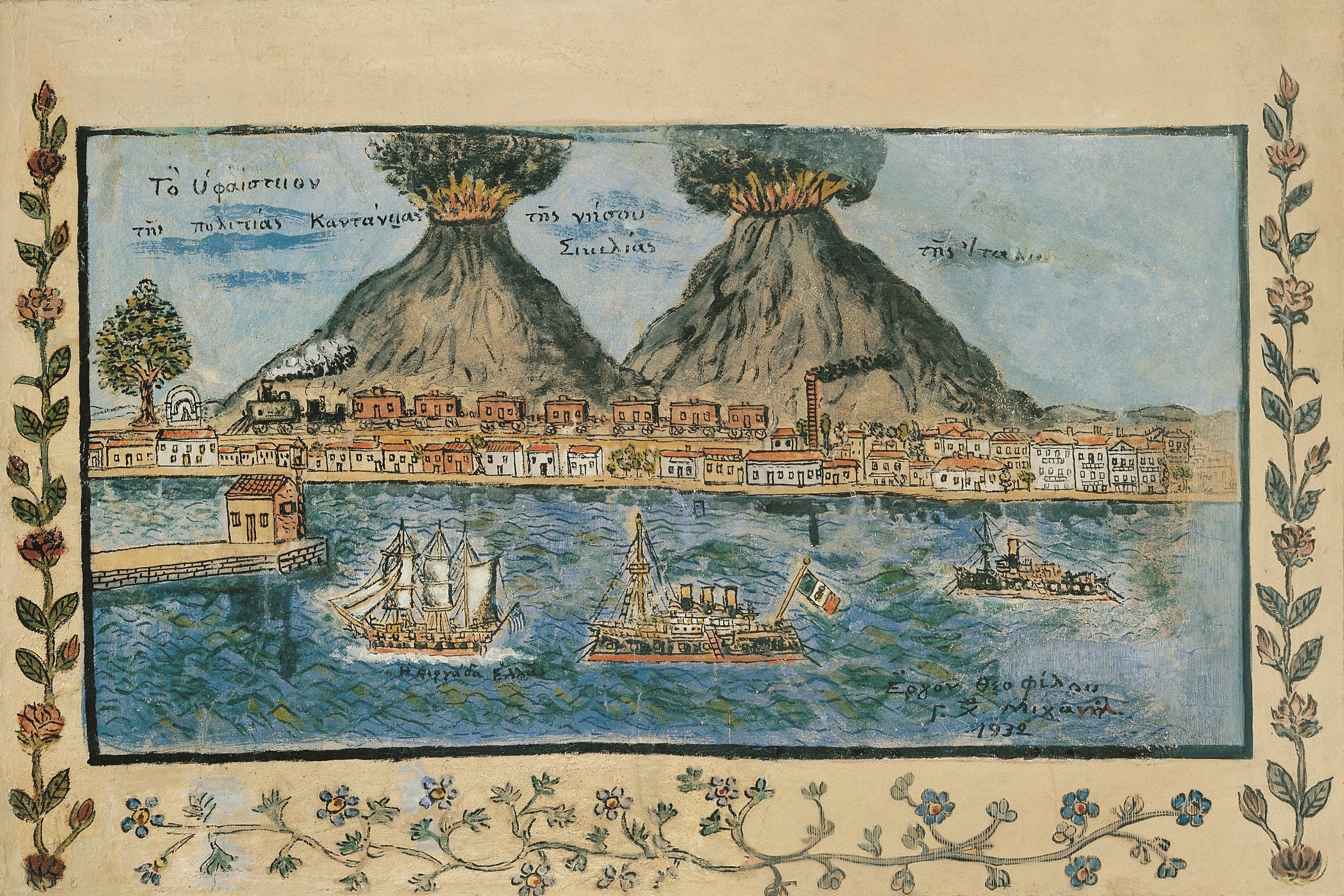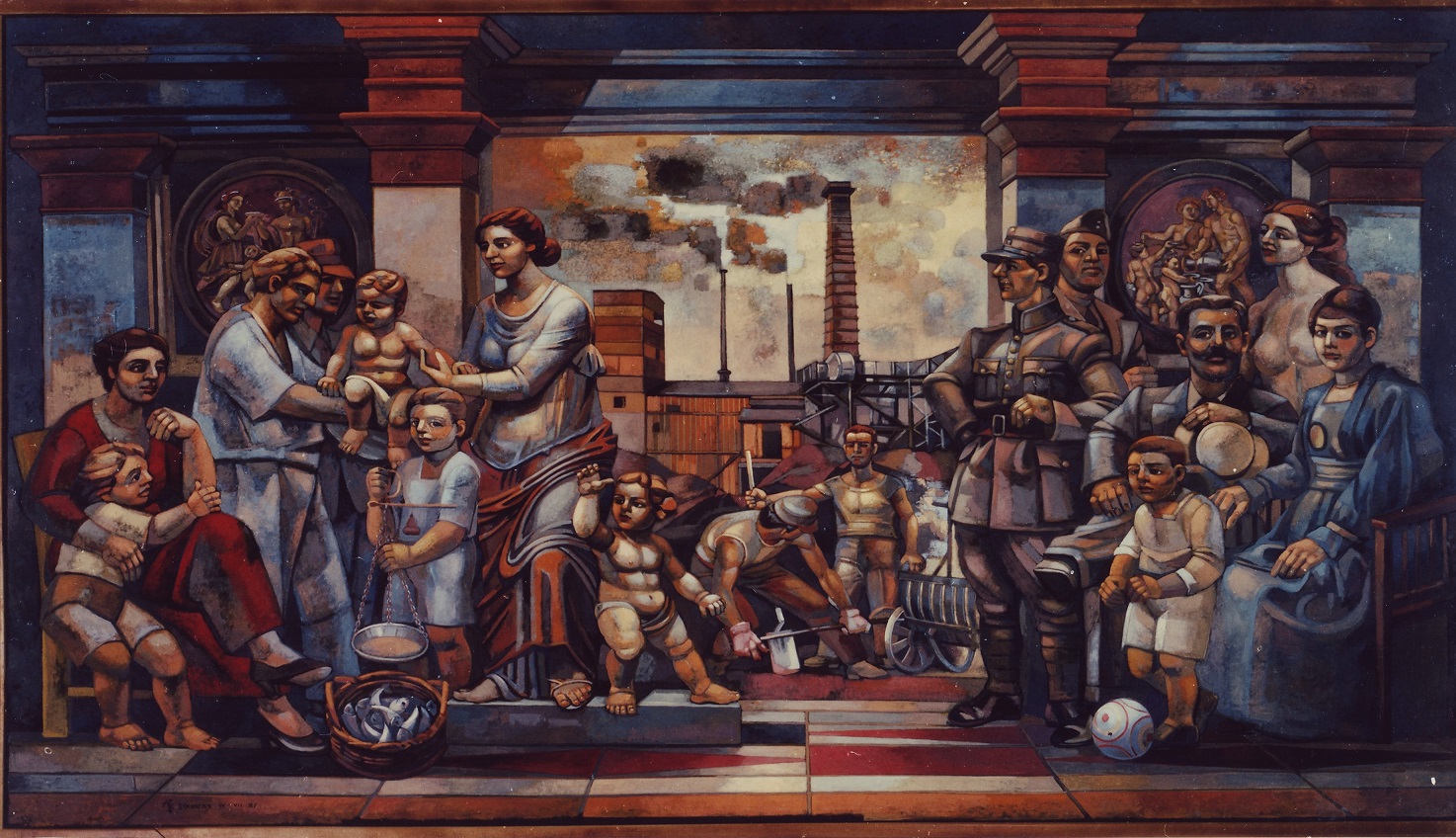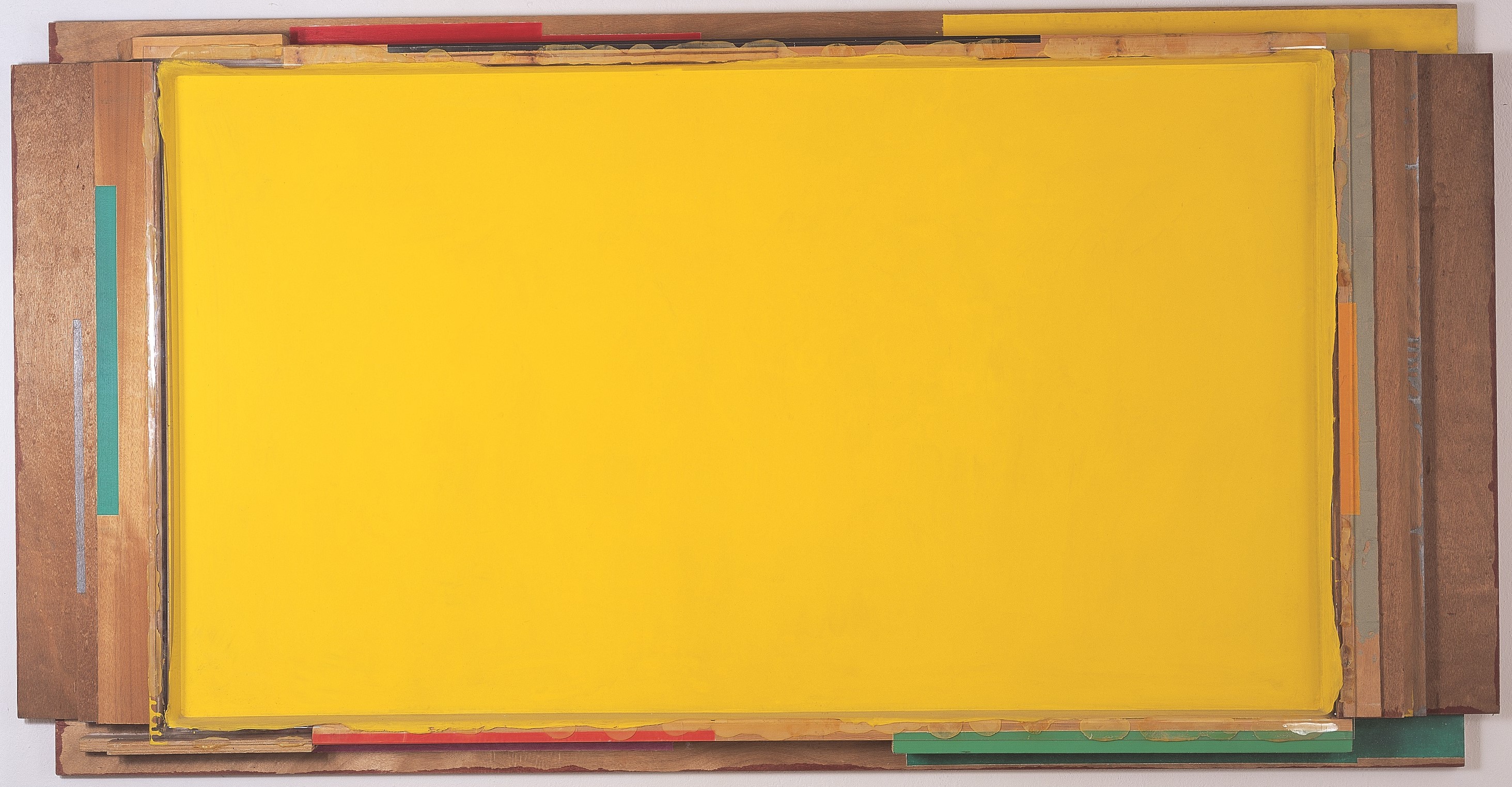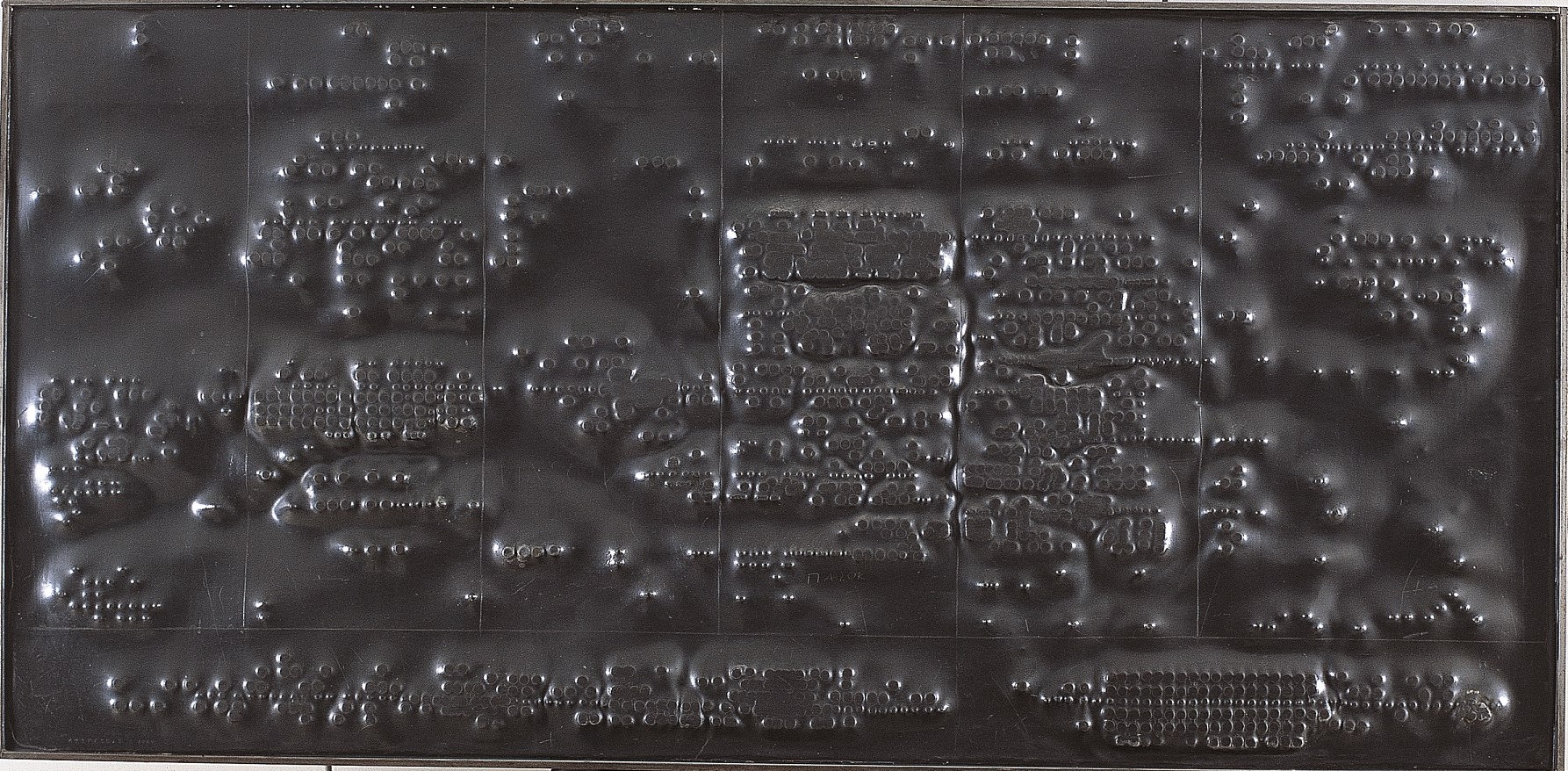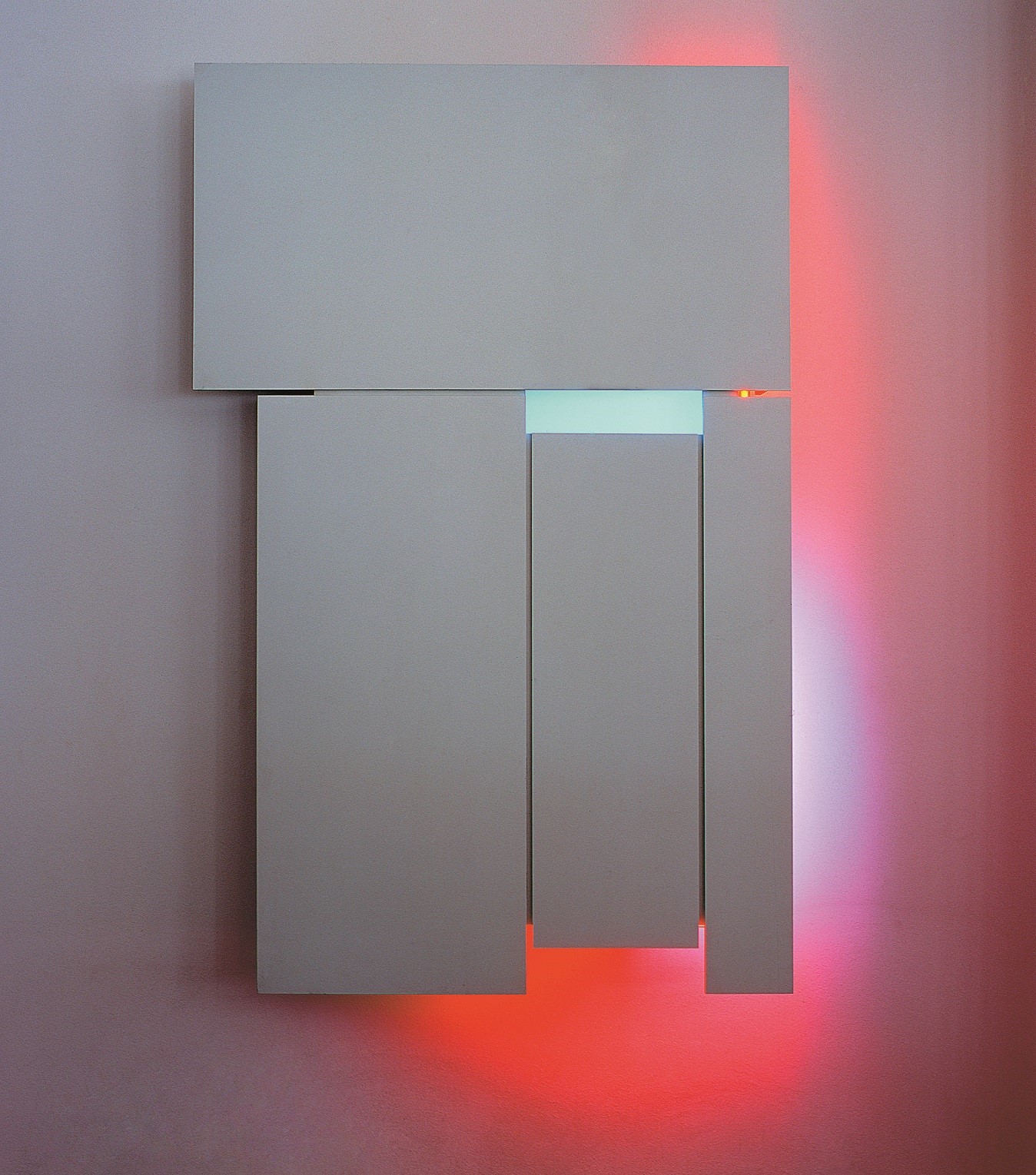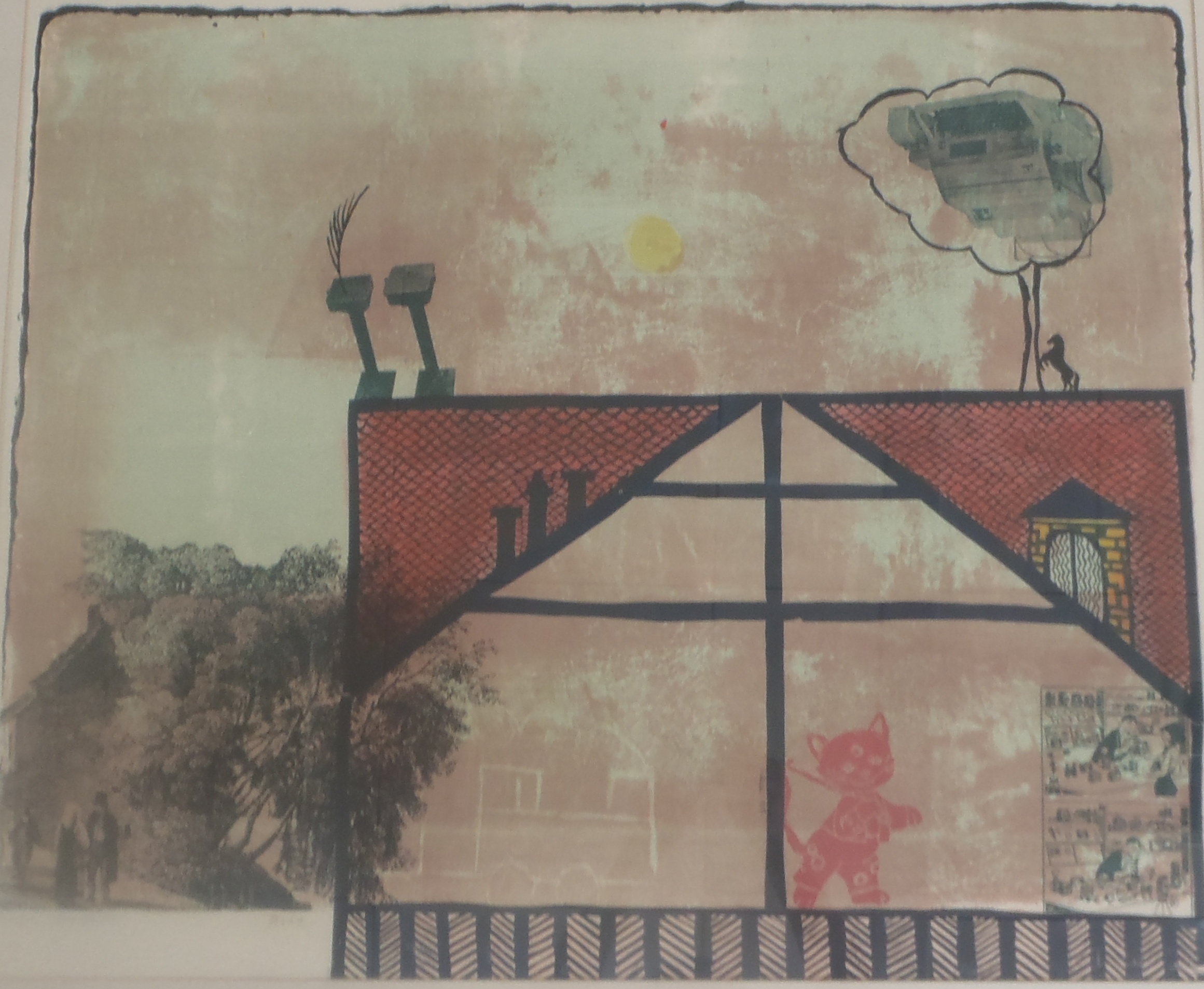Costas Tsoclis, Axiou 15 (2-11-1987)
In the work Axiou 15 (2-11-1987) by Costas Tsoclis, reality and abstraction meet in a composition where light and shadow play the leading roles. With evident influences from contemporary art movements, Tsoclis experimented with various painting styles. He created works that go beyond the visual limitations of the canvas and combine painting with real elements.
Between reality and abstraction
The work Axiou 15 (2-11-1987) by Costas Tsoclis depicts an outdoor scene and more specifically a garden entrance. The composition exudes a sense of tranquillity and clarity.
The key elements of the piece are:
- Light
- The depiction of space
The composition moves in a space between reality and abstraction, and is a typical example of the artist’s persistent effort to explore it.
Style and colours
Tsoclis portrays all the respective elements of the composition, such as trees, railings and rays of light, with broad, uniform brushstrokes. In terms of colour, grey, white and light blue hues dominate.
Another distinctive feature is the way the artist handles the contrast between light and shadow. Especially at the top part of the composition, the sunlight diffuses in every direction, almost distorting the image and eliminating the details of the trees. This element highlights the abstract nature of the composition.
At the same time, Tsoclis innovates and extends the representation outside the boundaries of the canvas, into the frame. This way, he creates the impression that the image continues beyond the piece.
His life in a nutshell
Costas Tsoclis (1930) was born in Athens. In his teenage years, he worked as an assistant at the studios of painters Stefanos Almaliotis and Vaggelis Faeinos, where he was mainly involved in creating giant posters and setting elements for films.
From 1948 to 1954 he studied Painting at the Athens School of Fine Arts under Yiannis Moralis. In 1957 he left on a state scholarship for Rome, where he stayed until 1960. Over the next decade he worked in Paris and then spent a year in Berlin, after an invitation from the DAAD (German Academic Exchange Service). Until 1983 he lived between Paris and Athens, where he returned permanently in 1984.
Participation in exhibitions
To this day, he has presented his works in over 80 solo exhibitions and numerous group exhibitions in Greece and abroad, such as:
- Tsoclis, Zoumboulakis Gallery, 1988
- Tsoclis, Retrospective, National Museum of Contemporary Art (EMST), 2001
- The Alpha Bank Collection, Benaki Museum, 2005
- The Alpha Bank Collection. Greek Art from 1920 until Today, Macedonian Museum of Modern Art (MOMus), 2006
In 1986 he represented Greece at the Venice Biennale.
Artistic influences
During his long stay abroad, Tsoclis experienced the contemporary art movements up close. This played a pivotal role in shaping his personal style, bearing influences from:
- Abstract painting
- Expressionism
- Surrealism
These influences are particularly evident in his early works.
An original technique
From the late 1960s onwards, Costas Tsoclis started expressing himself through installations. Often balancing between reality and optical illusion, in these works he combines:
- Painted space with physical space
- Painted elements with objects, simple or complex, that he glues on the canvas
- Art with technology
His intention is to eliminate visual limitations and expand painting beyond the limits of the canvas. This living painting he created evolved into an entire movement in the mid-1980s.
The work of art in our publications
The piece Axiou 15 (2-11-1987) by Costas Tsoclis is referenced in the Alpha Bank publication The Alpha Bank Collection. Paintings – Prints – Sculptures, edited by Irene Orati.
Buy the publication The Alpha Bank Collection. Paintings – Prints – Sculpture (Hardcover) on the Alpha Bank e-shop (only available in Greek).
In other literature
The painting is also referenced in the books:
- TSOCLIS, catalogue raisonné, 1953-2022, 2022
It also appears in the exhibition catalogues:
- Tsoclis, Zoumboulakis Gallery, 1988
- Costas Tsoclis. Retrospective, EMST, 2001
The Alpha Bank Art Collection is not open to the public.
You can visit it by appointment. Contact us to book your visit.
